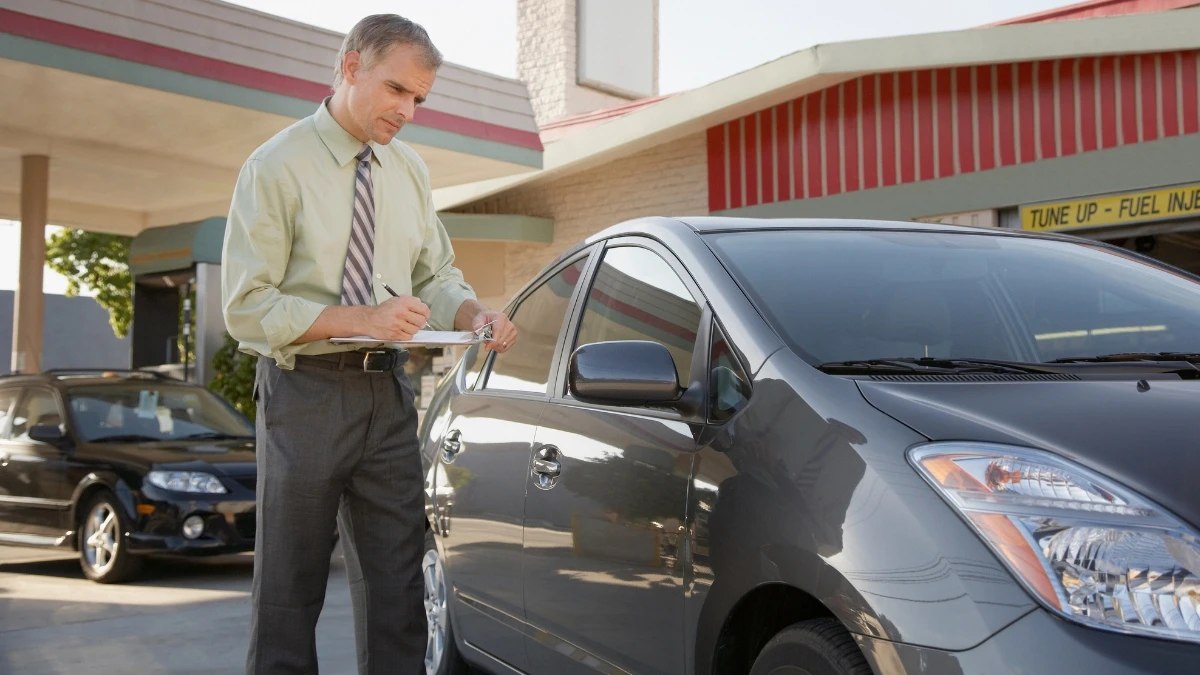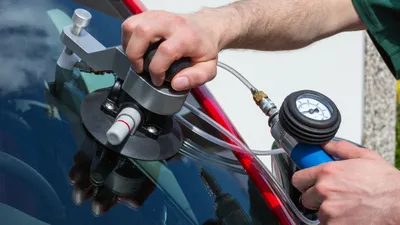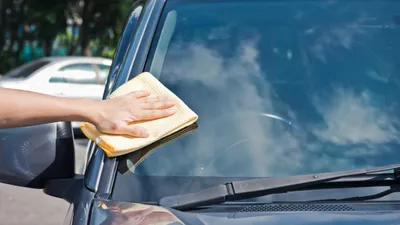Auto Glass Insurance Claims Explained: A Step-by-Step Guide
David Martinez
Insurance Specialist

Introduction
Discovering damage to your vehicle's windshield or other auto glass is frustrating enough without having to navigate the complexities of insurance claims. Whether it's a small chip from highway debris or a crack caused by temperature fluctuations, understanding how to properly file and process an auto glass insurance claim can save you time, money, and hassle.
The good news is that auto glass claims are among the most straightforward insurance claims to process. Many insurance companies have streamlined procedures specifically for windshield and auto glass damage, recognizing their frequency and the importance of prompt repairs for safety.
This comprehensive guide will walk you through the entire auto glass insurance claim process, from understanding your coverage to getting your vehicle back on the road with properly repaired or replaced glass. We'll demystify insurance terminology, outline the exact steps to take, and address common concerns that arise during the claim process.
Understanding Your Coverage
Before filing a claim, it's important to understand what your insurance policy covers regarding auto glass damage. Auto glass claims typically fall under comprehensive coverage, which is optional coverage that protects against non-collision damage like theft, vandalism, natural disasters, and flying debris.
Types of Coverage That May Apply
- Comprehensive Coverage: This is the primary coverage for auto glass damage not caused by a collision. It typically covers damage from rocks, debris, vandalism, extreme weather, and falling objects.
- Full Glass Coverage: Some policies include or offer an optional "full glass coverage" endorsement, which often waives your deductible specifically for glass repairs or replacements.
- Safety Equipment Coverage: Some policies include coverage for safety equipment, which can include windshields and other glass components that affect vehicle safety.
Deductible Considerations
Your deductible is the amount you pay out-of-pocket before your insurance covers the rest. For auto glass claims:
- Many insurers waive the deductible for windshield repairs (as opposed to replacements)
- Some states have "zero deductible" laws for windshield replacement
- Full glass coverage often means no deductible for glass-only claims
- Without special glass coverage, your standard comprehensive deductible will apply
Zero-Deductible States
Several states have special provisions regarding auto glass claims:
- Florida, Kentucky, and South Carolina have laws requiring insurance companies to offer zero-deductible auto glass replacement
- Arizona, Massachusetts, Minnesota, and New York have similar laws with variations
- Connecticut, Louisiana, and Colorado have special provisions that may reduce or modify glass claim deductibles
Even if you don't live in one of these states, your specific policy may offer similar benefits, so it's worth checking.
Step 1: Document the Damage
Proper documentation is crucial for a smooth claims process. As soon as you notice damage to your auto glass:
Take Clear Photographs
- Capture multiple angles of the damage in good lighting
- Take wide shots showing the location on the vehicle
- Take close-ups showing the extent and nature of the damage
- If possible, include something for scale (like a coin or ruler)
Record Important Details
Make note of:
- Date and approximate time when you first noticed the damage
- Location where the damage occurred (if known)
- Circumstances surrounding the damage (highway driving, parked during a storm, etc.)
- Approximate size and characteristics of the damage (chip, crack, spider web, etc.)
- Whether the damage is spreading or stable
Safety Assessment
Determine if the damage affects your ability to drive safely:
- Is the damage in the driver's line of sight?
- Does it impair visibility in any way?
- Is the damage spreading rapidly?
- Is the structural integrity of the glass compromised?
If you answer "yes" to any of these questions, consider the damage urgent and prioritize getting it addressed quickly. Most small chips and cracks can be safely driven with for a short period while you arrange repairs, but extensive damage may require immediate attention.
Step 2: Contact Your Insurance Provider
With documentation in hand, it's time to initiate the claims process with your insurance company.
Ways to File a Claim
Most insurers offer multiple methods to file a claim:
- Mobile App: Many insurers now have apps that allow you to file claims, upload photos, and track the claim status
- Online Portal: Log into your account on your insurer's website to file a claim
- Phone: Call the claims number on your insurance card or policy
- Agent Contact: Your local agent can often assist with filing the claim
Information You'll Need to Provide
- Your policy number and coverage information
- Vehicle details (make, model, year, VIN)
- Description of the damage and how it occurred (if known)
- Date and location where the damage occurred
- The photos you took of the damage
Questions to Ask Your Insurance Representative
During your initial contact, clarify these important points:
- Is the damage covered under your policy?
- What is your deductible for this type of claim?
- Will filing this claim affect your premium?
- Can you choose your own repair facility, or must you use one from their network?
- Will they pay the repair facility directly, or will you need to pay and be reimbursed?
- What documentation will you need to provide?
- What is the timeline for the claim process?
Claim Number and Tracking
Once you've initiated a claim, you'll receive a claim number. Keep this handy as you'll need it throughout the process. Most insurers also provide online claim tracking so you can monitor the status of your claim.
Step 3: Choose Your Auto Glass Provider
After initiating your claim, you'll need to select a service provider to perform the repair or replacement. Your options and considerations include:
Insurance Network vs. Independent Providers
- Insurance Network Providers: Many insurers have partnerships with specific auto glass companies. Using an in-network provider often means:
- Direct billing between the provider and insurer
- Streamlined claims process
- Guaranteed work that meets insurer standards
- Independent Providers: Most states allow you to choose any qualified provider, even if they're not in your insurer's network. Benefits may include:
- Higher quality materials or workmanship
- Local reputation and accountability
- More convenient service options
Remember: In most states, you have the legal right to choose your repair facility, regardless of what your insurance company may suggest. However, out-of-network providers might require you to pay upfront and seek reimbursement.
What to Look for in an Auto Glass Provider
When selecting a provider, consider these factors:
- Certification: Look for Auto Glass Safety Council (AGSC) certification and technicians certified by the National Windshield Repair Division (NWRD)
- Glass Quality: Determine if they use OEM (Original Equipment Manufacturer) glass or aftermarket glass
- Warranty: Verify the length and terms of their workmanship warranty
- ADAS Calibration: For vehicles with advanced driver assistance systems, ensure they can properly recalibrate these systems after windshield replacement
- Mobile Service: If convenient, check if they offer on-site service at your home or workplace
- Reviews and Reputation: Check online reviews and ask for recommendations
Getting an Estimate
Before proceeding with repairs:
- Get a detailed estimate that breaks down parts and labor
- Confirm that the provider will work directly with your insurance when possible
- Verify what your out-of-pocket costs will be, if any
- Ask about the expected timeline for parts availability and completion
Step 4: The Repair Process
Once you've selected a provider and received approval from your insurance company, it's time for the actual repair work to take place.
Repair vs. Replacement Decision
Your provider will assess whether repair or replacement is the appropriate solution:
- Repair is typically recommended when:
- The damage is a chip smaller than a quarter
- Cracks are less than 6 inches long
- The damage is not in the driver's direct line of sight
- The damage doesn't extend to the edge of the glass
- Replacement is necessary when:
- The damage is extensive or in the driver's line of sight
- Multiple chips or cracks are present
- The damage extends to the edge of the windshield
- The damage has penetrated both layers of laminated glass
- The glass is tempered (side or rear windows) and any breakage has occurred
The Repair/Replacement Appointment
On the day of service:
- Clear your vehicle of personal belongings that might obstruct access to the glass
- Remove any dash cameras, toll transponders, or parking permits from the windshield
- Ensure the area around the vehicle is accessible (for mobile service)
- Be prepared to leave your vehicle for several hours if using a shop location
ADAS Calibration Considerations
For vehicles with Advanced Driver Assistance Systems (ADAS) such as lane departure warning, automatic emergency braking, or adaptive cruise control:
- Calibration is usually necessary after windshield replacement
- This may require an additional appointment or extended service time
- Calibration may involve both static (in-shop) and dynamic (road test) procedures
- Proper calibration is critical for safety system functionality
- This service is typically covered by your insurance when related to a covered glass replacement
Post-Service Care Instructions
After service is complete, you'll typically receive care instructions:
- For replacements: wait time before driving (usually 1-2 hours minimum)
- Avoid car washes for a specified period (typically 24-48 hours)
- Keep one window slightly open to prevent pressure on the new seal
- Avoid slamming doors for 24-48 hours to allow adhesives to cure fully
- Instructions for monitoring the repair/replacement and when to report issues
Step 5: Finalizing the Claim
After the service is complete, there are a few final steps to close out the insurance claim process.
Payment Process
The payment process will follow one of these typical scenarios:
- Direct Billing: If your provider is in-network or has arrangements with your insurer, they'll bill your insurance company directly, and you'll only pay your deductible (if applicable) to the service provider
- Assignment of Benefits: You authorize the provider to collect payment directly from your insurance company
- Reimbursement: You pay the full amount to the service provider and submit the invoice to your insurance company for reimbursement
Documentation to Keep
Maintain these documents for your records:
- Final invoice showing all services performed
- Warranty information for the glass and/or repair work
- ADAS calibration certification (if applicable)
- Confirmation of insurance payment
- Receipt for your deductible payment
- Claim closure notification from your insurance company
Follow-up Inspection
After service:
- Inspect the repair or new glass for quality issues
- Test all related functions (wipers, defrosters, rain sensors)
- Monitor for any leaks, wind noise, or other issues
- Report any concerns promptly to both the service provider and your insurance company
Claim Closure
You'll typically receive a claim closure notification from your insurance company once all aspects of the claim have been satisfied. If you don't receive this within a reasonable timeframe after service completion, contact your insurer to ensure the claim has been properly processed and closed.
Common Questions and Concerns
Will My Insurance Rates Increase After a Glass Claim?
In most cases, a single auto glass claim will not trigger a rate increase. Glass claims are generally considered no-fault claims and are expected as part of normal vehicle ownership. However, policies vary by company and state, and multiple claims within a short period might affect your rates at renewal time. If you're concerned, ask your insurance agent about their specific policy regarding glass claims and premium impacts.
Can I Delay Repairs After Filing a Claim?
Most insurers allow reasonable time between filing a claim and completing repairs, but there may be limitations. Small chips can quickly spread into cracks requiring more extensive repairs, particularly in extreme temperatures or during rough driving conditions. Additionally, driving with significantly damaged glass may violate state laws regarding vehicle safety. Ask your insurer about their specific timeframe requirements for completing repairs after claim approval.
What If I'm Not Satisfied with the Repair?
Quality auto glass providers will stand behind their work with a warranty. If you're unsatisfied with the repair or replacement:
- Contact the service provider first to address the issue
- If they don't resolve it satisfactorily, contact your insurance company's claims department
- Document any issues with photos and detailed descriptions
- Be specific about what aspects of the work are unsatisfactory
Most reputable companies will work to resolve legitimate concerns promptly.
Is OEM Glass Really Necessary?
Original Equipment Manufacturer (OEM) glass is made by the same manufacturer that provided the glass to your vehicle's maker. Aftermarket glass is made by third parties to fit your vehicle. The difference can matter:
- OEM glass typically matches the original specifications exactly
- For vehicles with ADAS features, OEM glass may ensure better calibration accuracy
- Some luxury or specialized vehicles perform best with OEM glass
- Aftermarket glass can vary in quality but is often perfectly adequate for many vehicles
Your insurance may only cover aftermarket glass by default, but you can often pay the difference for OEM if you prefer it. Discuss your options with both your insurance and your service provider.
What About Damage That Occurs During Repair?
Occasionally, additional issues may arise during the repair process, such as:
- Discovery of previously hidden damage
- Molding or trim damage during removal
- Electrical issues with defrosters or sensors
These situations should be documented and reported immediately to both the service provider and your insurance company. Most related damage should be covered as part of the original claim, but proper documentation is essential.
Conclusion
Navigating an auto glass insurance claim doesn't have to be complicated. By understanding your coverage, documenting the damage properly, working with reputable service providers, and following the steps outlined in this guide, you can ensure a smooth process that gets your vehicle safely back on the road.
Remember that auto glass isn't just a cosmetic feature of your vehicle—it's a critical safety component. Properly repaired or replaced glass helps maintain the structural integrity of your vehicle and ensures clear visibility for safe driving. Your insurance policy is designed to help you maintain these safety standards without bearing the full financial burden.
At Clearview Autoglass, we work with all major insurance companies and can guide you through the entire claims process from start to finish. Our certified technicians provide top-quality repairs and replacements, and we handle the insurance paperwork for you in most cases. Whether you're dealing with a small chip or need a complete windshield replacement, we're here to make the process as hassle-free as possible.
Don't let auto glass damage compromise your safety or your vehicle's integrity. Contact us today to learn how we can help you navigate your insurance claim and restore your auto glass to perfect condition.
About the Author
David Martinez
Insurance Specialist at Clearview Autoglass with over 12 years of experience in the insurance industry. Former claims adjuster specializing in auto glass and vehicle damage assessment.
David helps customers navigate the insurance claims process and ensures they receive the maximum coverage benefits for their auto glass service needs.
Related Articles
Need Help With An Insurance Claim?
Our team handles insurance claims daily and can guide you through the entire process. We work with all major providers and can even file the claim on your behalf.


